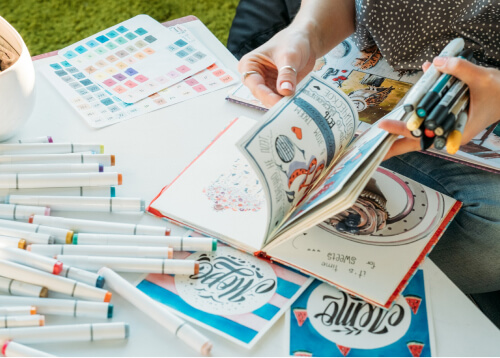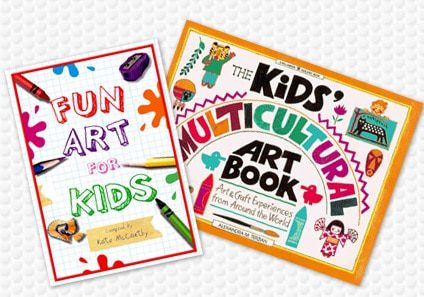Comprehending the Refine Behind High-Quality Art Book Printing for Art Lovers
When it involves high-grade art book printing, understanding the ins and outs of the procedure can raise your recognition for the last product. You could not understand how essential paper choice and ink selections are to the vibrancy of art work. Each element plays a substantial function in achieving the preferred impact. As you discover the different parts of art book printing, you'll discover understandings that might transform your viewpoint on art preservation and presentation.
The Importance of Paper Selection in Art Book Printing
When it comes to art book printing, the option of paper can make or damage the last product. You want your artwork to shine, and the right paper enhances shade vibrancy and detail. Think about aspects like weight, appearance, and surface; these elements considerably influence exactly how visitors view your work.
As an example, a larger stock conveys top quality and resilience, while a textured finish can include deepness to photos. Smooth paper is superb for detailed reproductions, allowing fine lines and subtle tones to show up crisp.
Do not ignore the paper's illumination; a brighter sheet can aid shades pop, making your art extra attractive. You'll also want to consider just how the paper connects with inks and whether it can take care of the printing procedure without buckling or bleed-through. Inevitably, choosing the ideal paper sets the stage for your art, guaranteeing it records the target market's interest just as you envisioned.
Choosing the Right Inks for Lively Reproductions
Choosing the right inks is equally as vital as choosing high quality paper to achieve vivid recreations in your art book. When you're printing artwork, you desire colors that pop and properly stand for the original piece. Decide for inks with a high pigment focus; these tend to generate richer and a lot more saturated colors.
You may consider utilizing archival inks, which withstand fading over time, guaranteeing your art book remains as striking as the day it was published. If you're collaborating with photos or digitally produced art, pigment-based inks can provide a broader color gamut, boosting detail and deepness.
Don't fail to remember concerning the surface! Matte and shiny inks can considerably alter the appearance of your art work, so think of the appearance you're aiming to attain - art book. Ultimately, the ideal ink choice matches your paper option, creating a spectacular aesthetic experience for your readers
The Function of Shade Monitoring in Print Quality
Color administration plays an important duty in accomplishing high print quality for your art book. It ensures that the colors you see on your screen equate properly to the printed page. Without efficient shade monitoring, your vibrant artworks might show up plain or altered, undermining your innovative vision.
Next, utilize color profiles tailored for your printer and paper type. These profiles guide the printer in reproducing colors properly, lowering disparities in between electronic and published versions.
When you prepare your data, consider using a color room like Adobe RGB or CMYK, relying on your printer's requirements. Constantly proof your work, too; a test print can disclose any kind of prospective color issues prior to the last run. By prioritizing color management, you guard the honesty of your art, assuring your target market experiences it as you intended.

Recognizing Different Binding Methods
Achieving the best try to find your art book surpasses color monitoring; binding methods additionally play a considerable role in its general presentation and toughness. You have several alternatives to assess, each with its very own distinct features.
If you're aiming for a specialist feel, situation binding offers a strong alternative with a difficult cover, excellent for showcasing your artwork. On the other hand, excellent binding offers an adaptable spine while keeping prices down, making it a popular option for softcover publications.
Spiral binding permits your art book to lay flat, which is excellent for displaying pictures without blockage. Saddle stitching is optimal for smaller sized pamphlets, giving a clean surface without the mass.
Inevitably, the binding technique you choose ought to show your imaginative vision and just how you want readers home to engage with your work. See to it to evaluate these alternatives meticulously to achieve the best outcome for your job.
The Effect of Publish Dimension and Format on Presentation
While the selection of print dimension and format might appear second to content, they greatly influence how your art work is regarded. The measurements of your prints can either boost or diminish the influence of your pieces. Bigger prints can attract customers in, permitting them to value elaborate details, while smaller sized styles might call for more intimate involvement.

Conservation Methods for Lasting Art Books
To ensure your art publications stand the test of time, it's vital to implement reliable preservation techniques. Beginning by keeping them in a cool, completely dry environment, far from direct sunshine and humidity. This stops fading and warping, keeping your web pages intact. Usage acid-free storage boxes or safety sleeves to secure them from dust and physical damages.
When handling your publications, always wash your hands or use cotton handwear covers to avoid oils and dust moving onto the pages. Prevent flexing or wrinkling the spines; instead, make use of book supports when showing them.
For included defense, consider purchasing archival-quality products for any repair work or improvements. Consistently check your collection for indications of wear or damages, resolving issues quickly. By complying with these straightforward strategies, you can guarantee your art books stay lively and obtainable for years to come, preserving their charm and value for future generations.
Working together With Printers for Optimum Outcomes
When you prepare to publish your click resources art book, picking the appropriate printer is important to achieving your vision. Clear communication about your expectations and needs will aid assure that both you and the printer get on the very same web page. Allow's check out exactly how to make this partnership as seamless and effective as possible.
Picking the Right Printer

Reliable Communication Techniques
Reliable interaction is important for transforming your art book vision right into fact, especially when working together with printers. art book. Beginning by plainly outlining your job's objectives, consisting of layout elements, preferred products, and any particular printing strategies. Do not wait to share your inspirations and references; this assists the printer comprehend your visual
Establish normal check-ins to discuss progress and deal with any concerns. Use visuals, like mock-ups or Get More Info samples, to communicate your ideas a lot more successfully. Be open to comments, as printers usually have beneficial understandings that can boost your task. Ultimately, keep a favorable partnership by being considerate and pleased of their expertise. This partnership will guarantee that your art book meets your assumptions and beams in its final type.
Frequently Asked Inquiries
What Are Usual Errors to Avoid in Art Book Printing?
When publishing your art book, prevent common blunders like inadequate resolution pictures, incorrect shade profiles, and neglecting web page layout. Do not fail to remember to proofread and ascertain information to confirm your end product fulfills your assumptions.
How Does Digital Printing Differ From Typical Printing Techniques?
Digital printing uses electronic files to produce prints directly, enabling quicker turnaround and modification. In contrast, traditional techniques involve physical plates, which can be lengthy and less versatile for small runs or special designs.
What Is the Normal Turnaround Time for Art Book Printing?
The normal turn-around time for art book printing varies, yet you can expect it to take anywhere from a couple of weeks to several months. Aspects like intricacy, quantity, and printing approach all influence this timeline.
Can I Print a Minimal Edition Art Book Financially?
You can publish a limited version art book financially by selecting economical products, optimizing print runs, and making use of electronic printing options. Cautious preparation and budgeting will aid you accomplish quality without spending too much.
What Are the Environmental Factors To Consider in Art Book Printing?
When considering art book printing, you must assume about environment-friendly products, sustainable inks, and energy-efficient processes (art book). Selecting regional printers can additionally reduce your carbon footprint, making your job both attractive and environmentally accountable